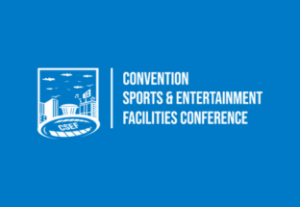The future of facilities management – Global growth insights for the next 10 years
Facilities management services (FM) has rapidly evolved since its recognition as an industry in the early 1980s when the International Facilities Management Association was formed. The days when FM centered around assets, buildings and plants are in the past; the future will focus largely on customer service and improved outcomes.
The next decade will see significant transformation of the industry driven by several key trends that are already having an impact in the global marketplace.
Smart Technology
Right now in 2020, the use of facilities management software, mobile applications and connected devices is fairly widespread. Facilities management services will continue to rely on these tools of technology as standard operating procedures.
However, the addition of artificial intelligence, robotics, sensors and the internet of things (IoT) will create environments where just about every aspect–the doors, lights, windows, HVAC units and CCTV–has a unique identifier and is fully integrated.
The result is a facility with increased energy efficiency, sustainability and a more satisfied workforce–who wouldn’t like getting coffee from a machine that recognizes you and pours your cup to order? Or automatically adjusts the temperature in a meeting room based on the number of attendees?
Obviously, creating these intelligent, or smart, buildings takes extensive planning, foresight and capital. Organizations should note that it’s usually more cost-effective to build rather than retro-fit and take that into consideration when looking ahead to future projects.
Still, these sleek automated facilities will no longer be the stuff of sci-fi movies, but a reality in the facilities management of tomorrow.
Predictive Maintenance
Space-age technological advancements will continue to shape the future of FM, especially with regards to predictive maintenance management strategies. Sensors allow for monitoring just about any component within a facility without the need for human interference. This real-time data and tracking means organizations can move away from preventive maintenance tasks and toward more predictive maintenance measures.
Preventive maintenance will still have its place, but the value of predictive maintenance will require organizations to implement this strategy in order to remain competitive.
Flex Space
With the increase in the number of employees who work remotely, flexible schedules, hot desking and coop work spaces, the traditional idea of each worker having his or her own office is likely going the way of the fax machine.
Keep in mind, though, there’s a significant number of workers who aren’t crazy about not having a personalized space of their own. So building maintenance management needs to be thoughtful and flexible in how it accommodates this trend over the next 10 years.
Nevertheless, employees who are physically at the office often prefer the option to work in collaborative “third-spaces” such as lounges, coffee bars or other gathering spaces free of confining walls.
Millennials and Gen Z workers want features such as bright open spaces in innovative buildings that offer amenities such as fresh food options and other extras that make leaving home for the office worth the effort.
It’s estimated that by the end of 2030, 30% of commercial real estate will be flex space, up from today’s figure of <5%. The area usage per person will drop from just over 200 sq. ft. to less than 150 sq. ft. As the demand for flex spaces rises, it will be vital to consider how building retrofits can improve your space utilization.
Health and Wellness
Dovetailing the trend for increased flex space is the growing focus on the health and well-being of employees and occupants. Facilities management services will need to address this issue in two major ways.
First, as more workplaces face the challenge of having a multi-generational employee base and the occurrence of lifestyle-related diseases such as diabetes increases, there will be a need to reassess building design. This new field of “wellness architecture” means buildings are designed with humans and their health in mind.
The workplace of the future needs to facilitate and promote a more comfortable, active and productive lifestyle for employees, young and old. For instance, instead of the dark enclosed stairwells that are common today, open and attractive stairways encourage workers to make a healthy decision to take the stairs.
Second, what a company has to offer in terms of wellness will be a weighty factor when it comes to recruiting and retaining top talent. According to a recent CoreNet survey, a whopping 80% of respondents said a health and wellness program at work was important to them.
Strategies to make the workplace healthier include things as simple as adding more live plants and increasing access to nature by creating peaceful outdoor spaces or expanding outdoor views. Meeting rooms can be used for yoga sessions at lunch.
Other changes to improve the health of a facility are less visible, but have a significant impact on the quality of the indoor environment. They include making sure construction projects are completed with non-toxic building materials, using chemical-free cleaning products and low-VOC finishes, and installing proper HVAC and air recirculation equipment.
The benefits of focusing on health and wellness go beyond making occupants feel better. Healthier environments reduce the cost of absenteeism and increase productivity–employees in green buildings scored higher in cognitive function than when they were breathing the air in conventional buildings.
Sustainability and Energy Maintenance
Fueled by the challenges of global warming and sustainability, an increase in environmental regulations will require companies to continue to look for ways to be more energy efficient and reduce their carbon footprint.
FMs may find pressure to innovate in this area comes from all angles–the public, investors and board members in addition to regulatory agencies. Facilities management services will need to make concentrated efforts to reduce their energy and water consumption, use alternative and renewable energy sources, increase responsible sourcing and practice comprehensive recycling.
Forward thinking FMs will invest now in energy-saving improvements such as LED lighting, high-efficiency HVAC systems and preventive and predictive maintenance programs which monitor equipment to ensure its efficient operation.
Through technological advancements like the Internet of Things (IoT), managing energy use is now a set-and-forget task. Sensors provide real-time tracking which allows those in charge of building maintenance management to be proactive regarding energy consumption. In the most advanced building systems, usage can even be predicted and adjusted accordingly.
Outsourcing
Outsourcing certainly isn’t new, but more and more companies will rely on outsourcing’s agility to allow their in-house teams to focus elsewhere while saving costs.
The job of a facilities manager continues to grow in complexity. From the more traditional areas of overseeing leasing costs, personnel, asset management, energy consumption, and equipment maintenance to the newer areas that focus on customer service aspects like user experience and innovation to enhance their clients’ businesses, the responsibilities are exhaustive.
Outsourced facilities management services provide expertise, support and resources that together act as a strategic partner without the overhead and hassle.
Integrated Facilities Management (IFM)
When companies are looking for a provider to outsource their FM to, many will choose one who offers Integrated Facilities Management (IFM). As noted above, facilities management is quickly evolving, growing more complex at an unprecedented rate.
Ensuring the quality of their physical environments in a cost efficient manner demands a focus that simply isn’t part of an organization’s core mission. In addition to managing assets and maintenance, there’s the need for research and development in order to innovate and stay ahead of the competition.
Add to that the need to orchestrate a shift to a service culture; recruiting, training and retaining talent; and keeping abreast of health and safety regulations and the most advanced technologies, and you end up needing skill sets and a knowledge base covering a wide range of services.
The future of facility management will be marked by an increase in IFM providers whose purpose is to fill the gap and offer organizations streamlined operations to supercharge their business productivity. Not only does this reduce the number of suppliers an organization has to deal with, it allows for one point of contact, enhancing accountability and control.
Conclusion: Kickstart Future Growth
The future growth of facilities management will be influenced by several key trends that center around technology, sustainability and people. The way ahead may seem daunting, but as with eating the proverbial elephant, just start with one bite at a time.
If you’re not already using an automated solution to manage your facilities–work orders, maintenance, assets and more–that’s a good place to start. Here at MRI NETfacilities, we offer intuitive and flexible solutions to help you transform your organization. Reach out if you have questions, or better yet, take a look at what we can do with our no-obligation, free demonstration.
Cut Through Data Chaos with MRI Agora Insights
Today’s commercial property owners and operators are using more technology systems than ever before, yet challenges still exist around data visibility, integrations, and automation. It’s no secret that the real estate industry generates vast quantiti…

